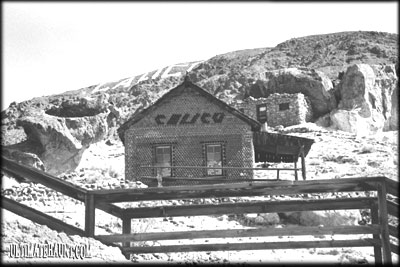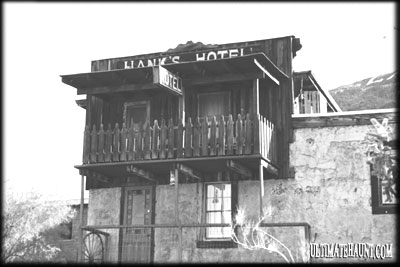
 By 1885, Calico began
to look almost civilized. It had a schoolhouse (pictured to the left), church
services, temperance laws, a literary society and even a dancing school.
By now, news of pure silver the size of fists struck the California mining
world and the stampede was on. Soon the town boasted a population of 3500.
One observer reported, "Everybody in town was carrying a specimen in their
pockets." In little more than a decade, over $13,000,000 of silver ore was
produced from the Calico mines. So rich was the pull of silver that ore
under $100 per ton was thrown away.
By 1885, Calico began
to look almost civilized. It had a schoolhouse (pictured to the left), church
services, temperance laws, a literary society and even a dancing school.
By now, news of pure silver the size of fists struck the California mining
world and the stampede was on. Soon the town boasted a population of 3500.
One observer reported, "Everybody in town was carrying a specimen in their
pockets." In little more than a decade, over $13,000,000 of silver ore was
produced from the Calico mines. So rich was the pull of silver that ore
under $100 per ton was thrown away.Through the 1890's, however, Calico went into its silver decline. By the turn of the century, the price of silver had dropped from $1.31 to 63 cents, and Calico's great days were over. By 1929, Calico had truly become a ghost town.

The Calico Ghost Town Bottlehouse
Through the funds made from the popularity of Knott's Berry Farm, Walter Knott purchased Calico in 1950 with the intent on preserving it. As a young man, Knott had worked the mines in 1910. The original buildings, as in many mining camps, were constructed from adobe brick due to the lack of lumber. Cement and wood has been used during the restoration but made to look as original as possible.

Calico Ghost Town's "Hank's Hotel"